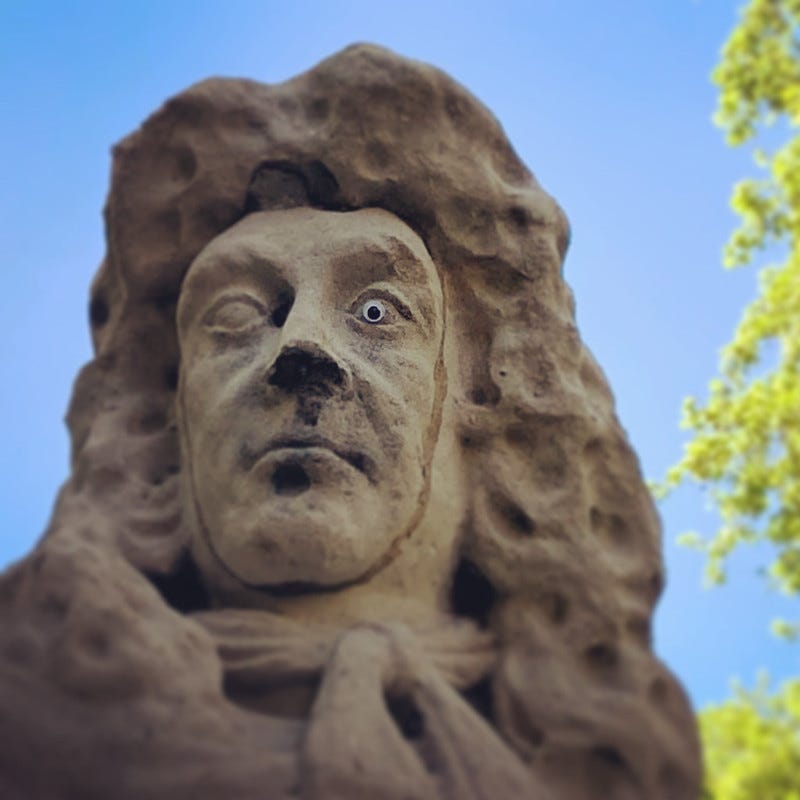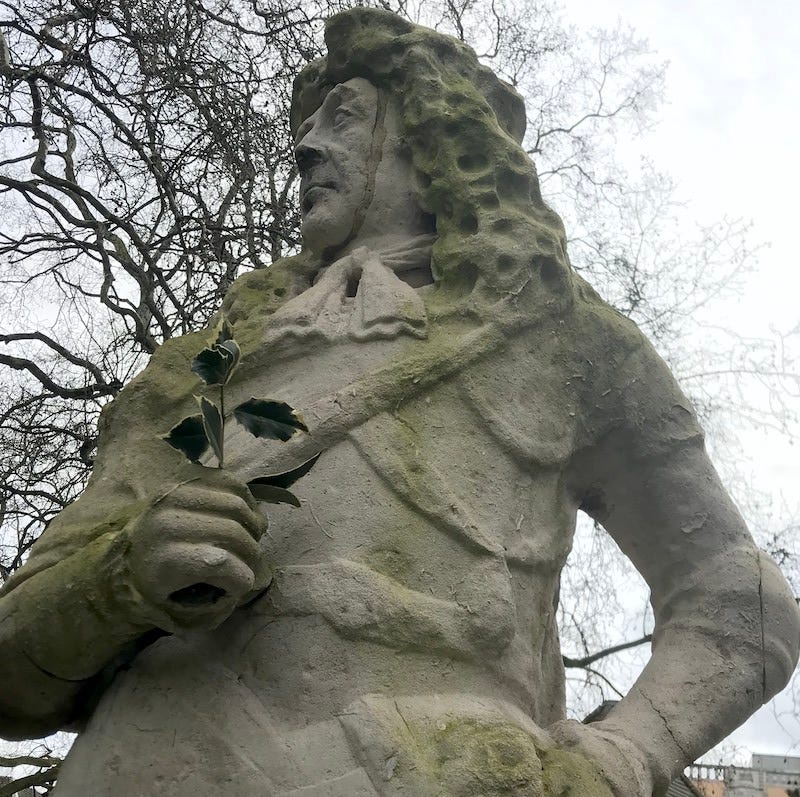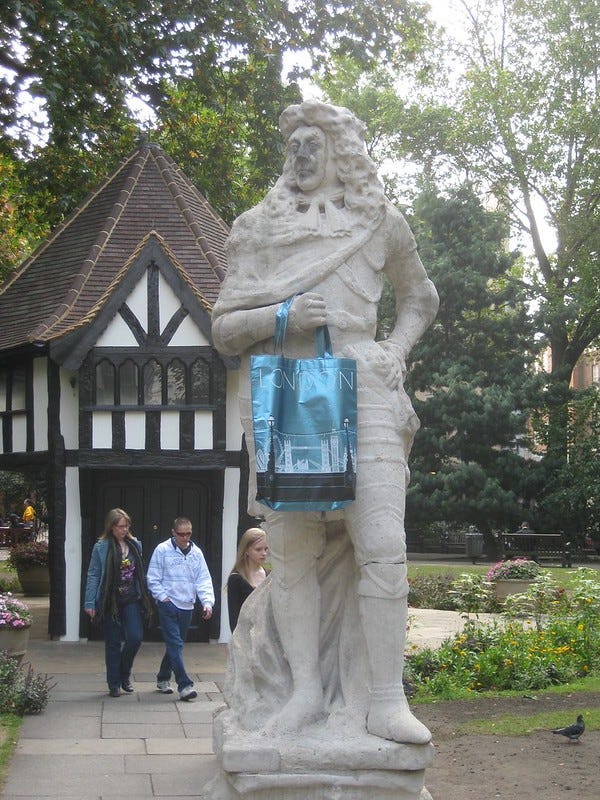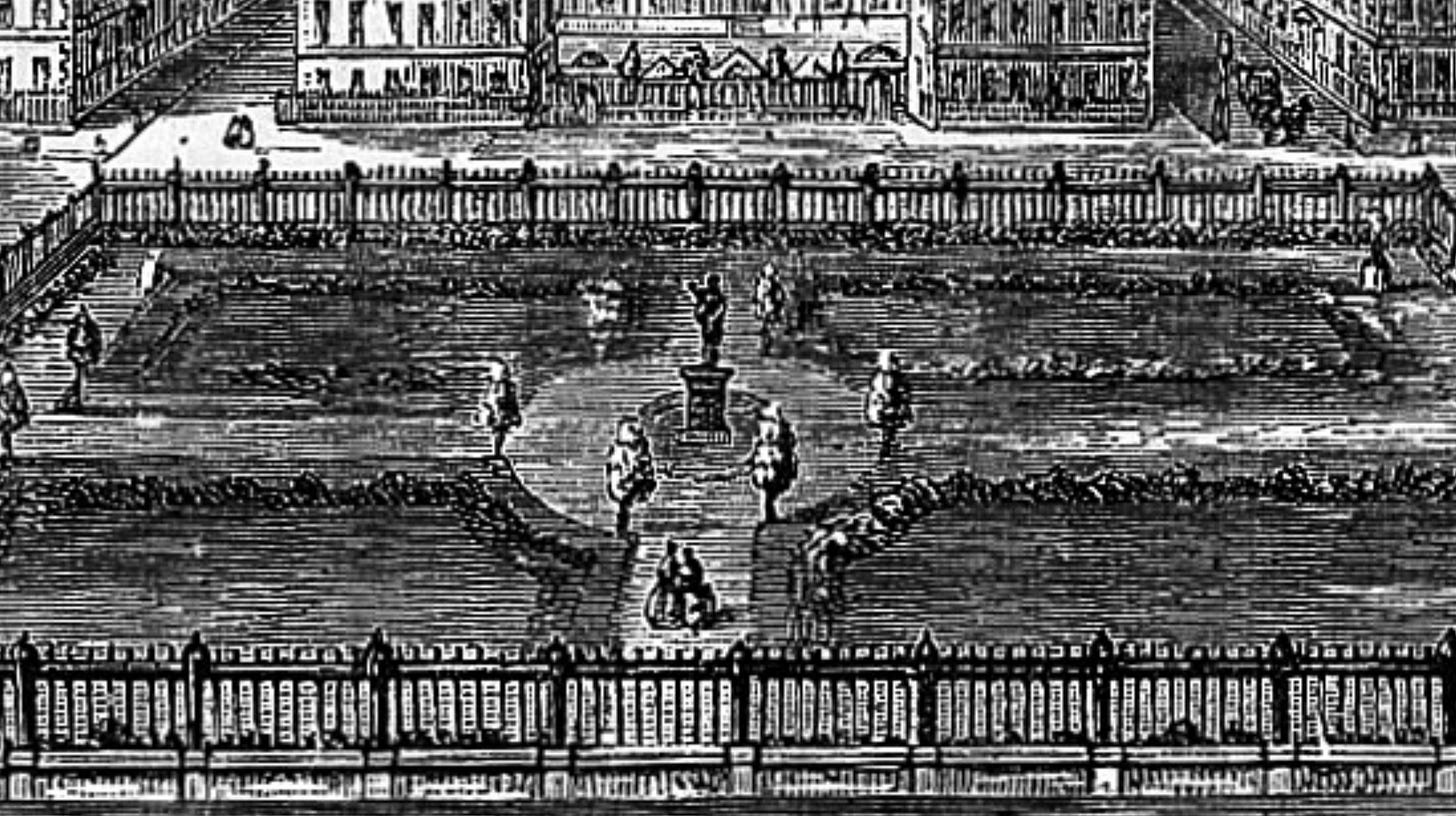Welcome to the Friday newsletter for paying subscribers (with a teaser for everyone else). Today’s theme concerns the tatterdemalion statue of Charles II in Soho Square. Did you know he once stood in a lake? Or that he witnessed the tragic end of one of Britain’s best-loved dramatists?
That’s for the main feature. First, the History Radar of upcoming London history events…
History Radar
LONDONIST PARTY: Would you believe it -- Londonist (parent website of Londonist: Time Machine) turns 20 years old in 2024! I’ve been there for 19.5 of them. To celebrate, we're throwing a party at the magnificent Five Points Taproom & Courtyard on Wednesday 12 June. There's live music, incredible food and the chance to mingle with the Londonist team and other London lovers. Be sure to nab a ticket soon! (Your first couple of drinks are included.)
BIG QUIZ: Are you booked into London’s biggest and best history quiz yet? I might be a bit biased in those adjectives, as I’ll be the quizmaster for London Historians’ 6th annual London history quiz. It takes place on 15 May in Holborn, with numerous prizes and the lightly coveted trophy (winners get their team name engraved). See you there?
MONDAY MATINEE: Head to the Handel Hendrix House in Mayfair on 6 May for an historically minded lunchtime concert. Beth Stone and Aidan Phillips perform a programme of flute and harpsichord sonatas from baroque composers linked to the life of George Frideric Handel.
JAMES PLAYFAIR: On 8 May, learn about the life and work of James Playfair, an 18th-century architect who died at the age of 38, and who may have gone on to reshape the architecture of Scotland had he lived longer. This talk at Sir John Soane's Museum delves into his architectural ambitions to 'improve' Scottish architecture by aligning it with the standards of metropolitan London.
CALL THE MIDWIFE: On 9 May, Museum of London Docklands offers a guided walk through the streets of Poplar, focusing on sites linked to the memoir and TV series Call The Midwife. Visit the Lansbury Estate, Poplar High Street and St Frideswide’s Mission House ('Nonnatus' House) hearing about the local community and the nurses and nuns who served them following the second world war.
BEATING THE BOUNDS: Also on 9 May, you can witness one of London’s unusual traditions, Beating the Bounds, an ancient ritual still observed at the church of All Hallows by the Tower. Watch as members of the Clergy and Livery Companies visit each parish boundary to pray for protection and blessings — including boarding a boat to reach a boundary marker in the middle of the Thames.
NATIONAL GALLERY 200: This month marks 200 years since the National Gallery opened, an occasion being celebrated with a weekend of special events (10-11 May). There's a late night opening on the Friday night, including a special performance by Jools Holland (tickets via ballot only), and a light show across the exterior front of the gallery on both nights.
PUPPET FESTIVAL: Another of those unique London events, the Covent Garden May Fayre & Puppet Festival celebrates the first recorded production of a Mr Punch show, as seen/recorded by Samuel Pepys in Covent Garden in 1662. It draws puppeteers from all over the country for a procession, church service, shows, stalls and workshops. And it’s free… no strings attached.
This Soho Statue Witnessed a Famous, Heroic Death
This is Charles II. The fearfully weathered statue in Soho Square is in a pitiful state. Mossy, eroded, and with a coarsely repaired head that should inspire one of the many local screenwriters to pen a 17th century monarchical remake of Face/Off.
He’s in dire need of a restoration. Which is, at least, historically apt.
Every time I pass through Soho Square, the Merry Simulacrum is up to something silly. He might be wearing a googly eye (top); clutching a branch of holly (above); or showing off his new manbag (below):
But this daft old statue has also witnessed a poignant tragedy — the death of one of the most celebrated men in the world.
The King moves to Harrow
Charles II, sculpted by Caius Cibber, is one of London’s oldest statues. The meat-and-bone Charles almost certainly admired his stone likeness, for it was installed in the square in 1681, four years before the King’s death. The statue presided over an ornamental fountain with sculpted personifications of four major rivers: Thames, Humber, Severn and Tyne. This is the best view that history affords us:
Here Charles remained for almost two centuries. Then, in 1875, Soho Square underwent major rearrangements. The weathered king — thought by some at the time to represent the Duke of Monmouth — was removed, along with the remains of his fountain.
Step forward Thomas Blackwell, co-owner of the square’s Crosse and Blackwell factory1. Blackwell was fond of the statue and didn’t want to see it destroyed. He handed it over to the painter Frederick Goodall, who agreed to re-erect it in his back garden.








